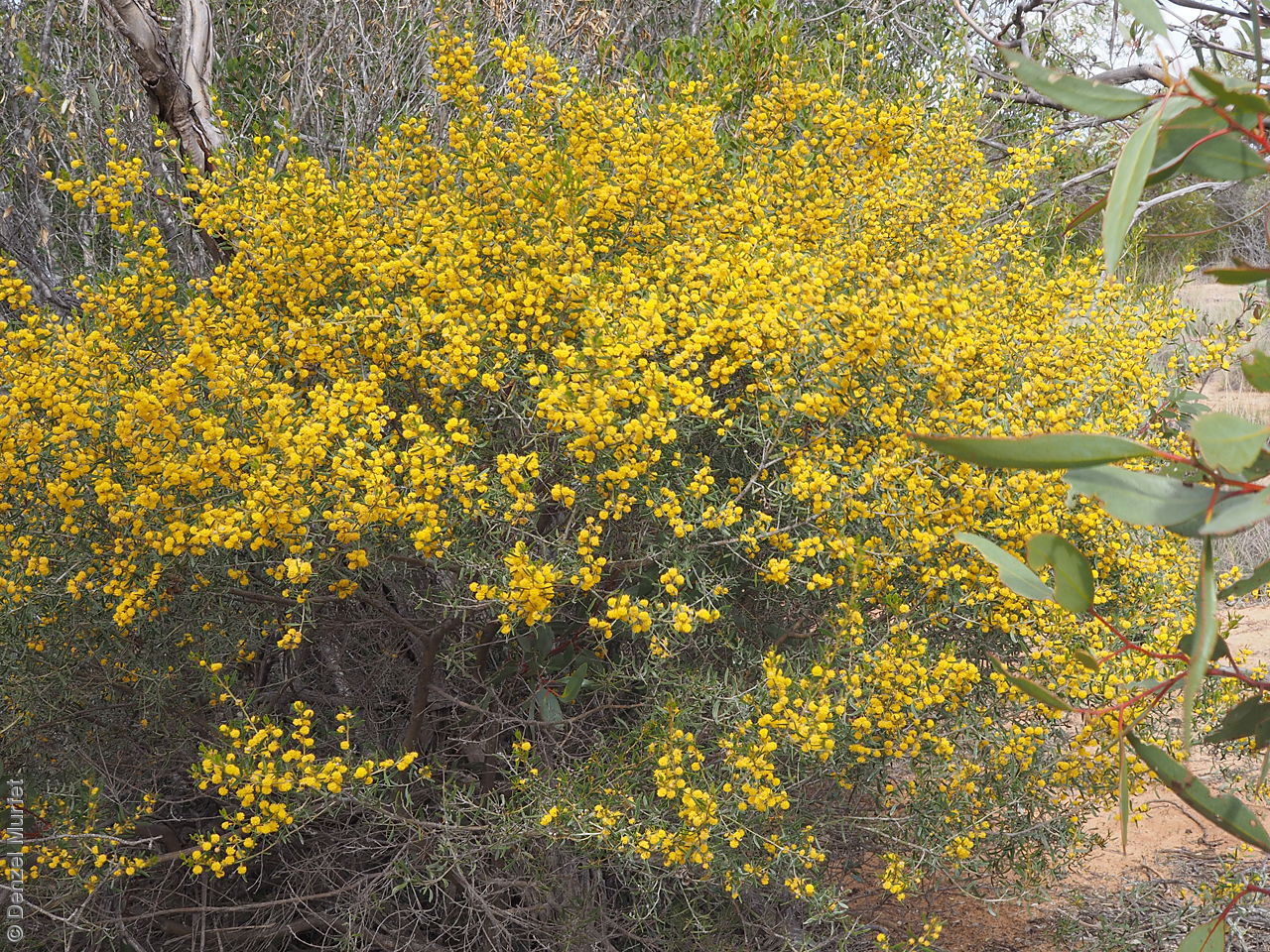
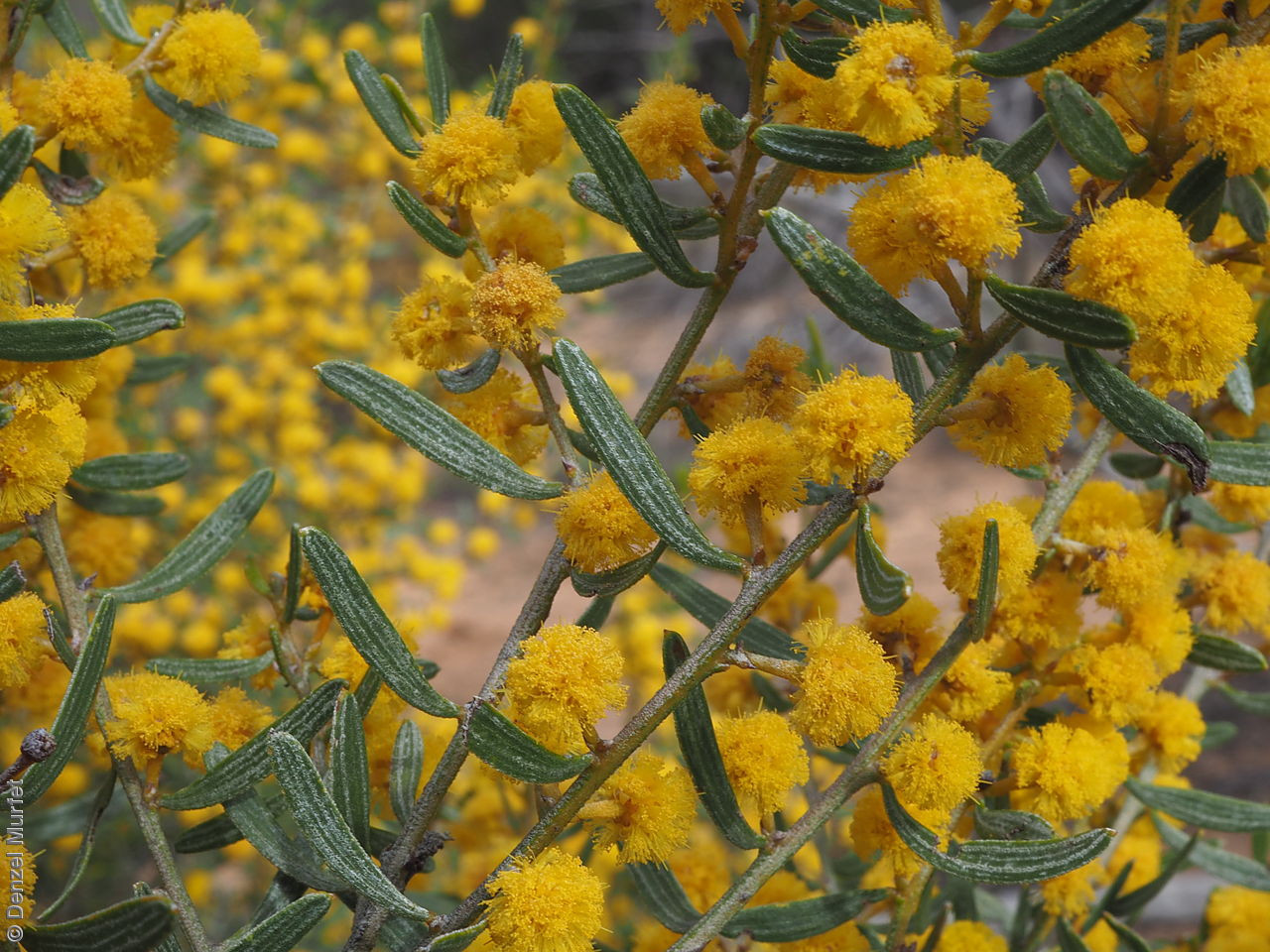
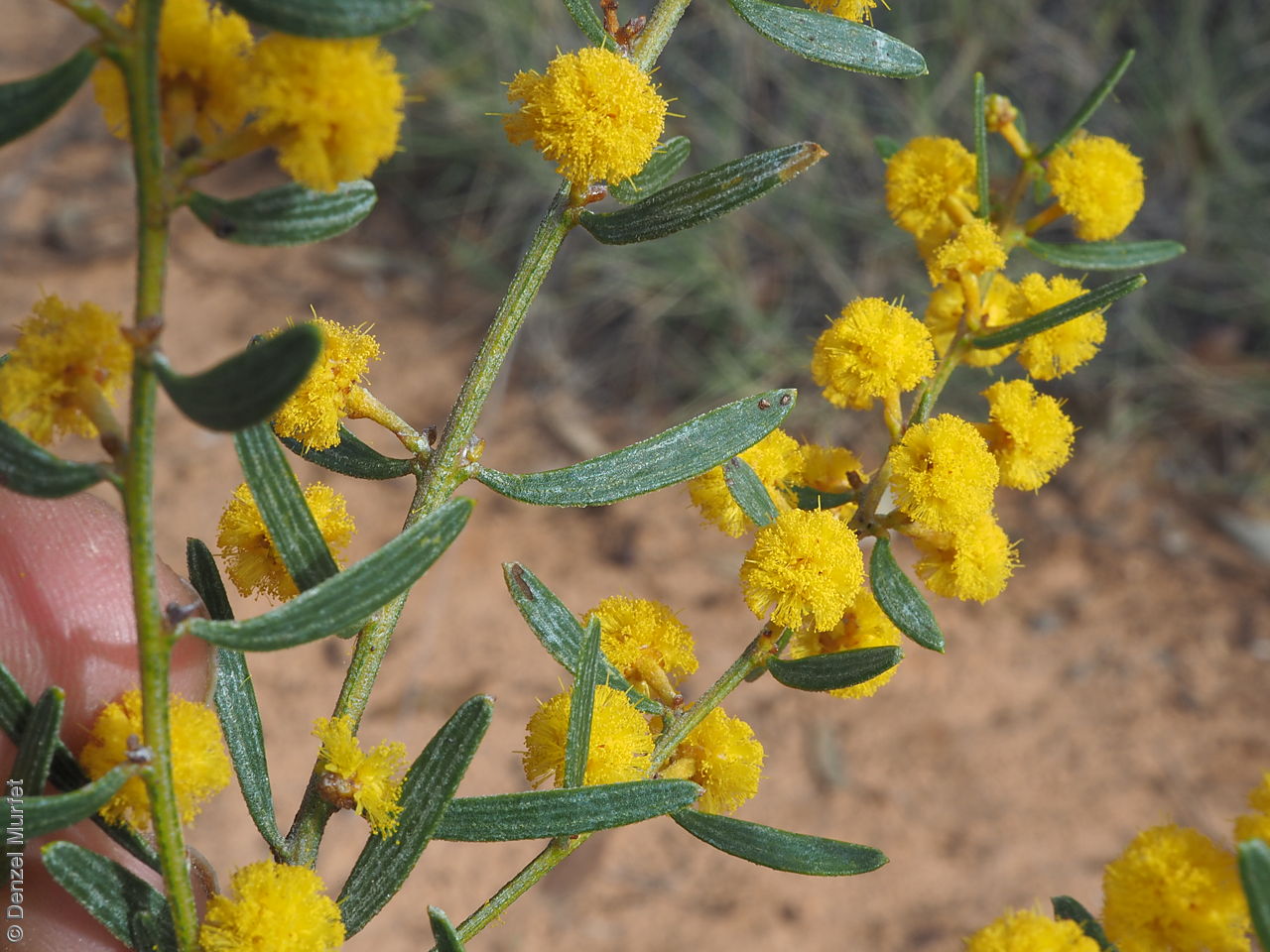
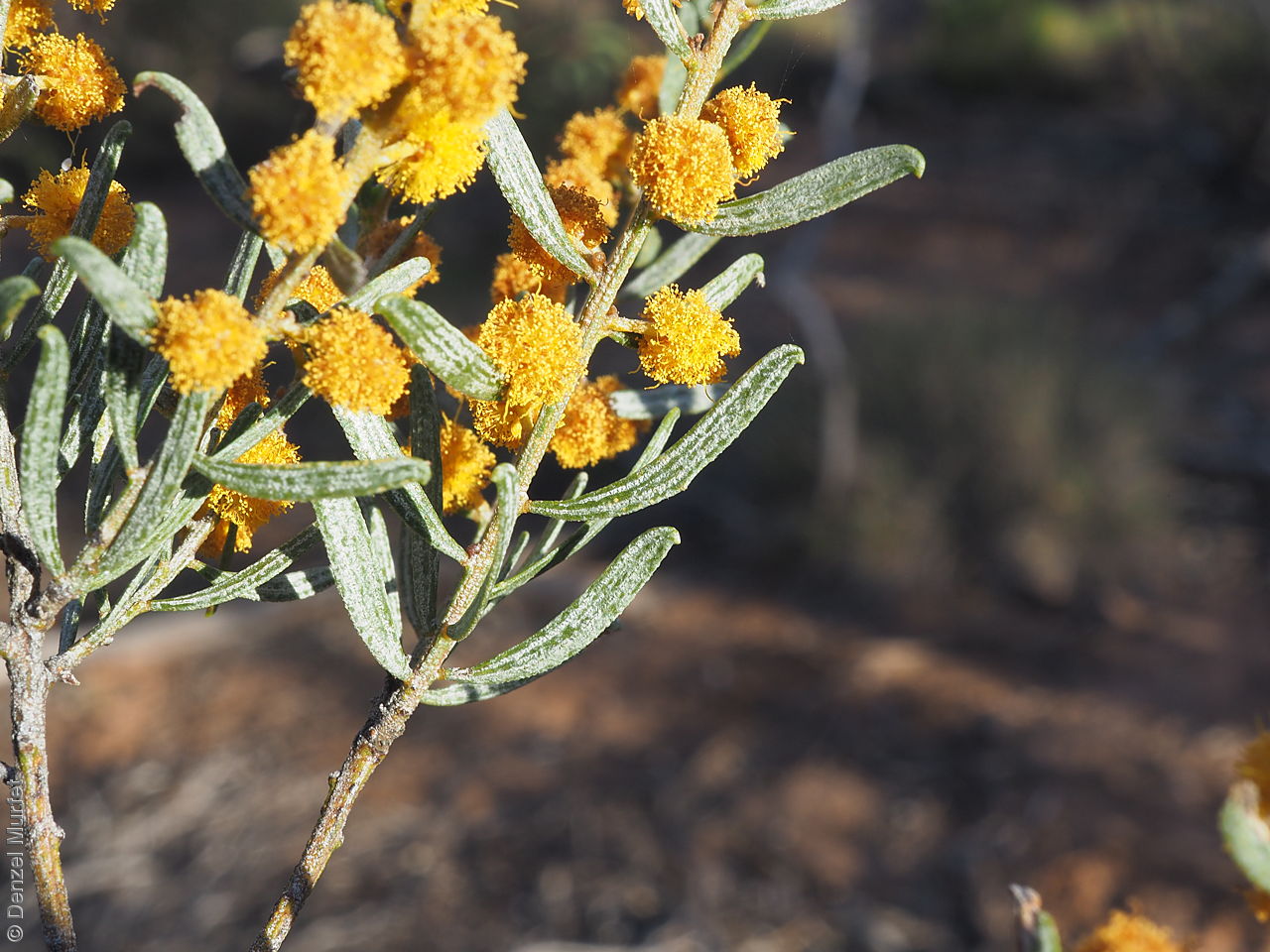
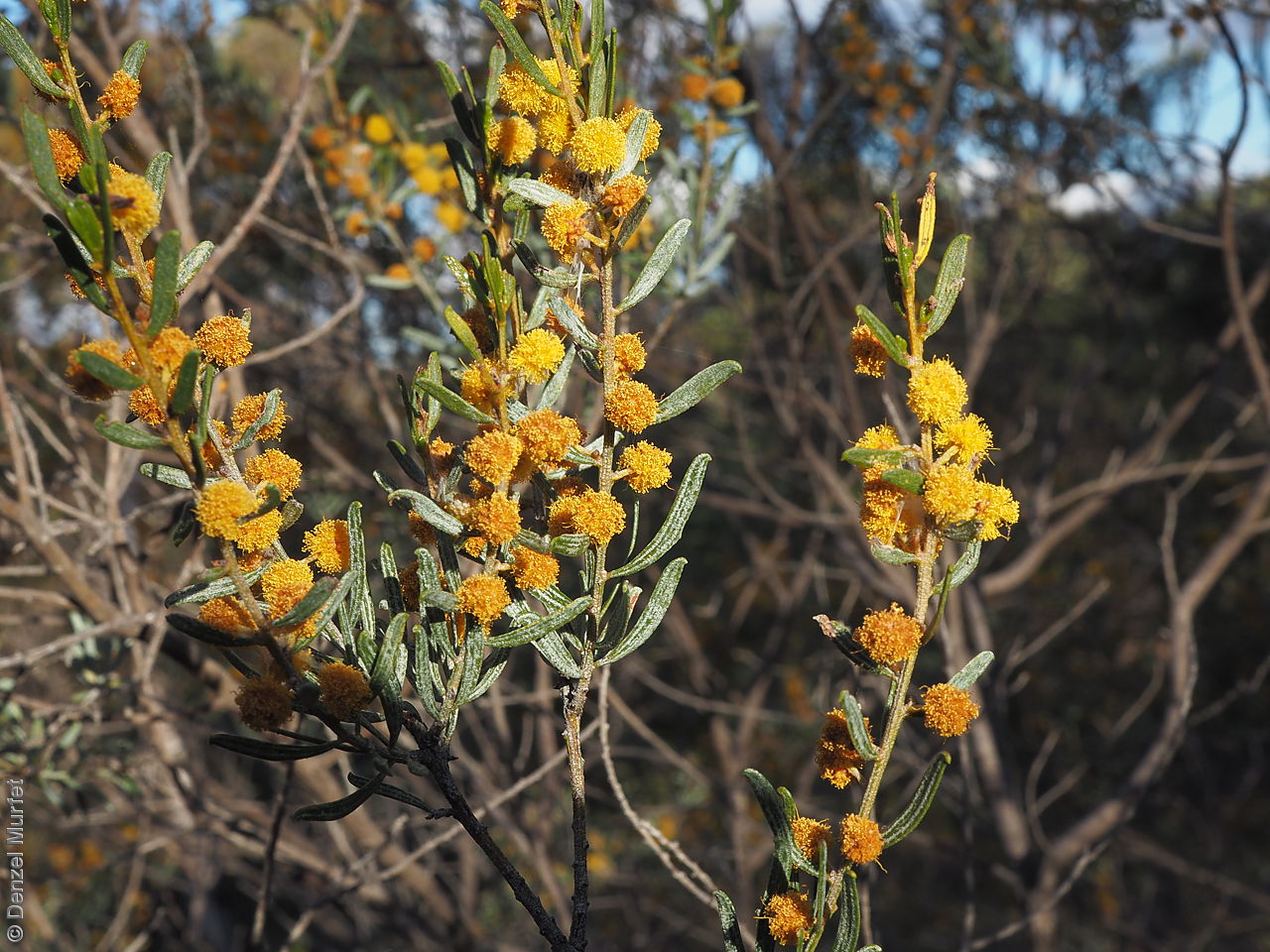
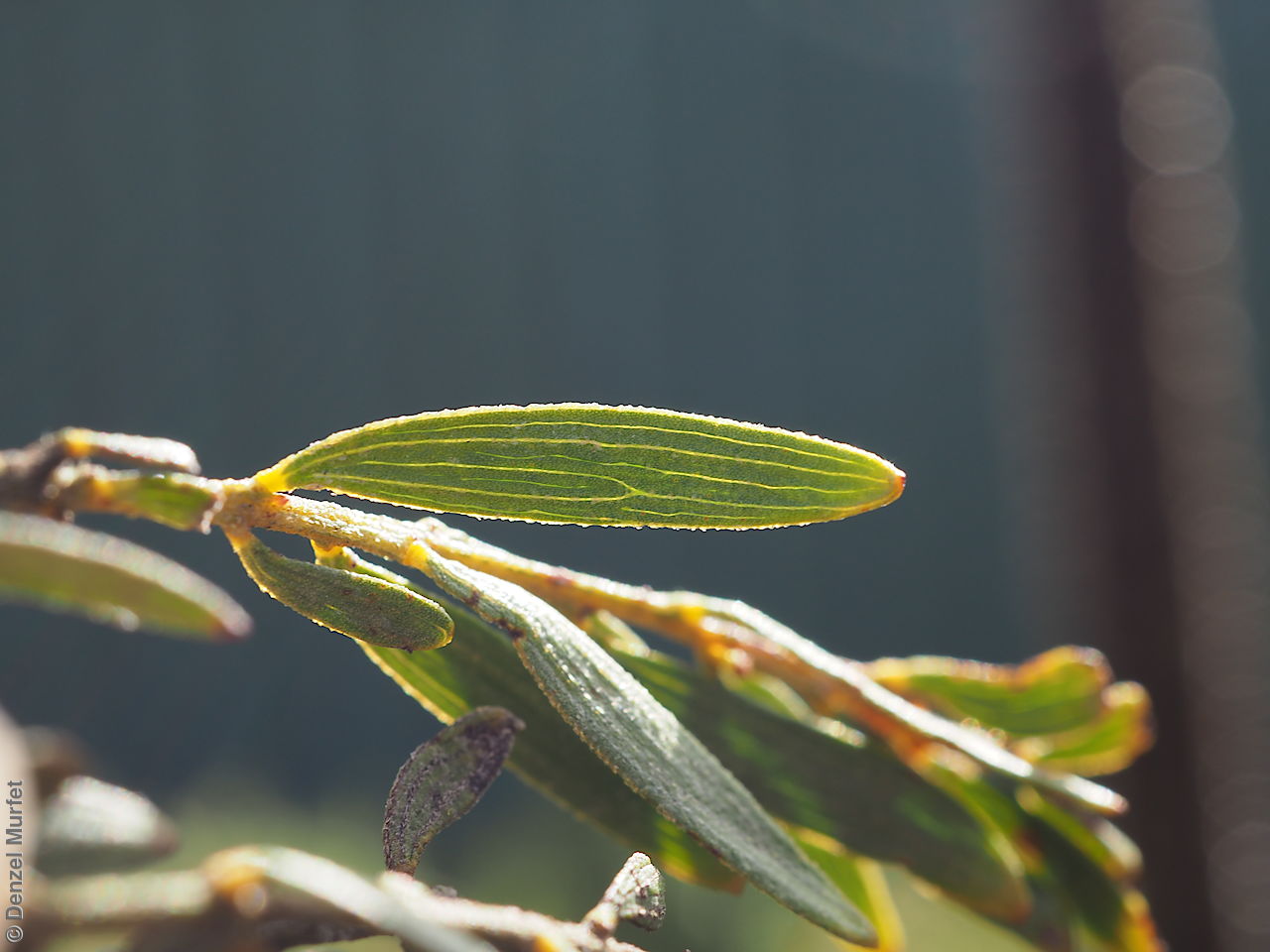
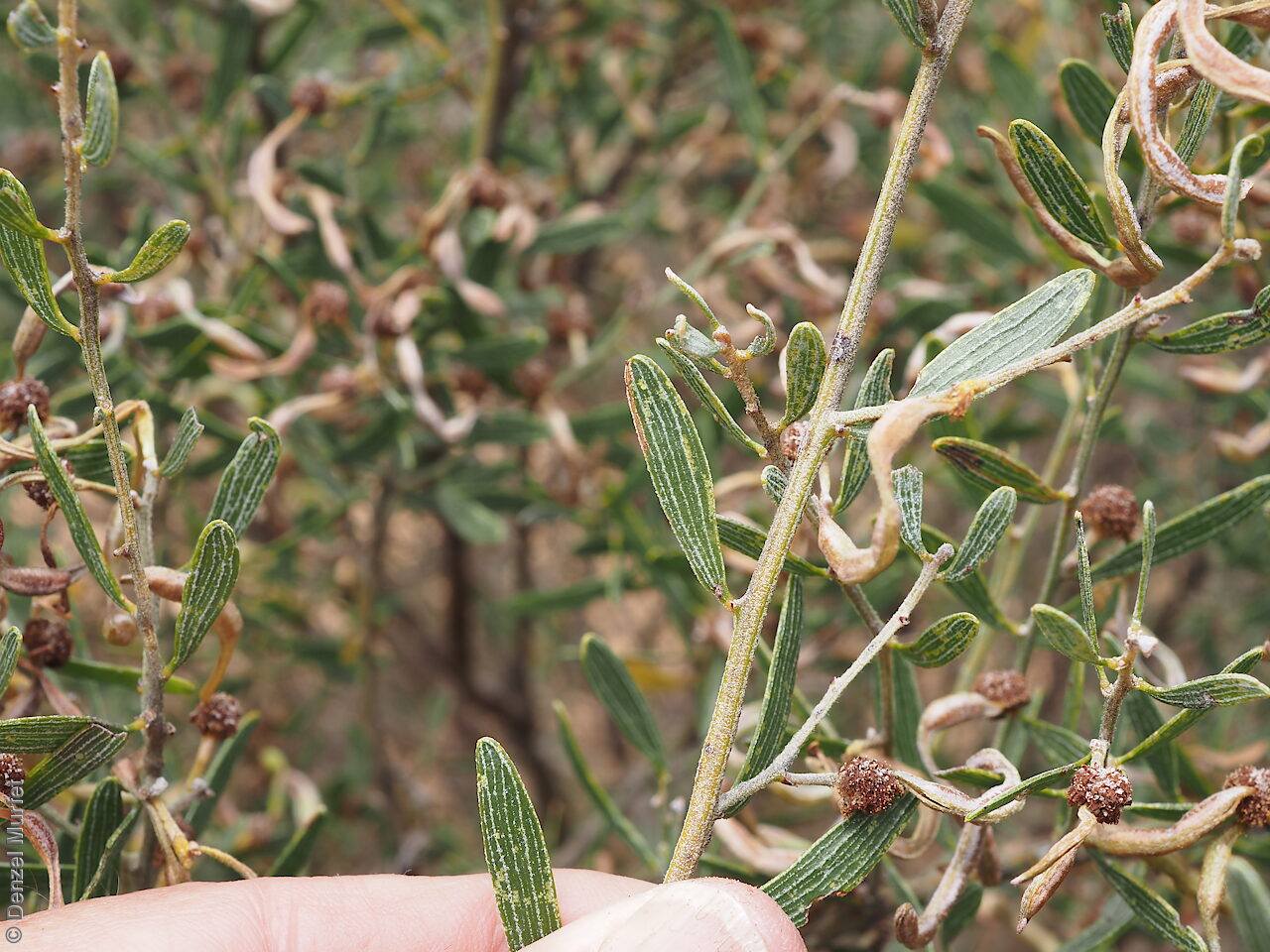
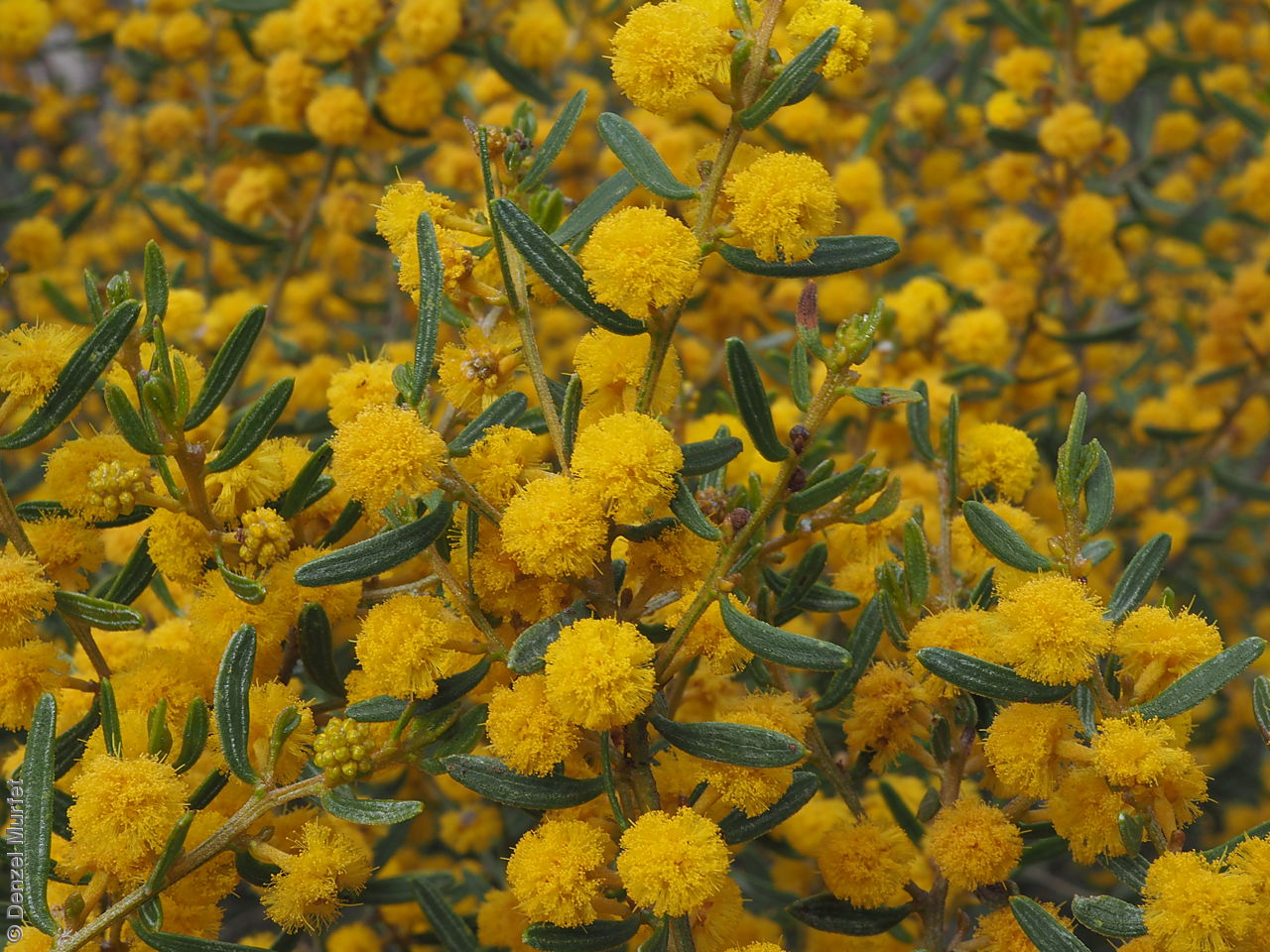
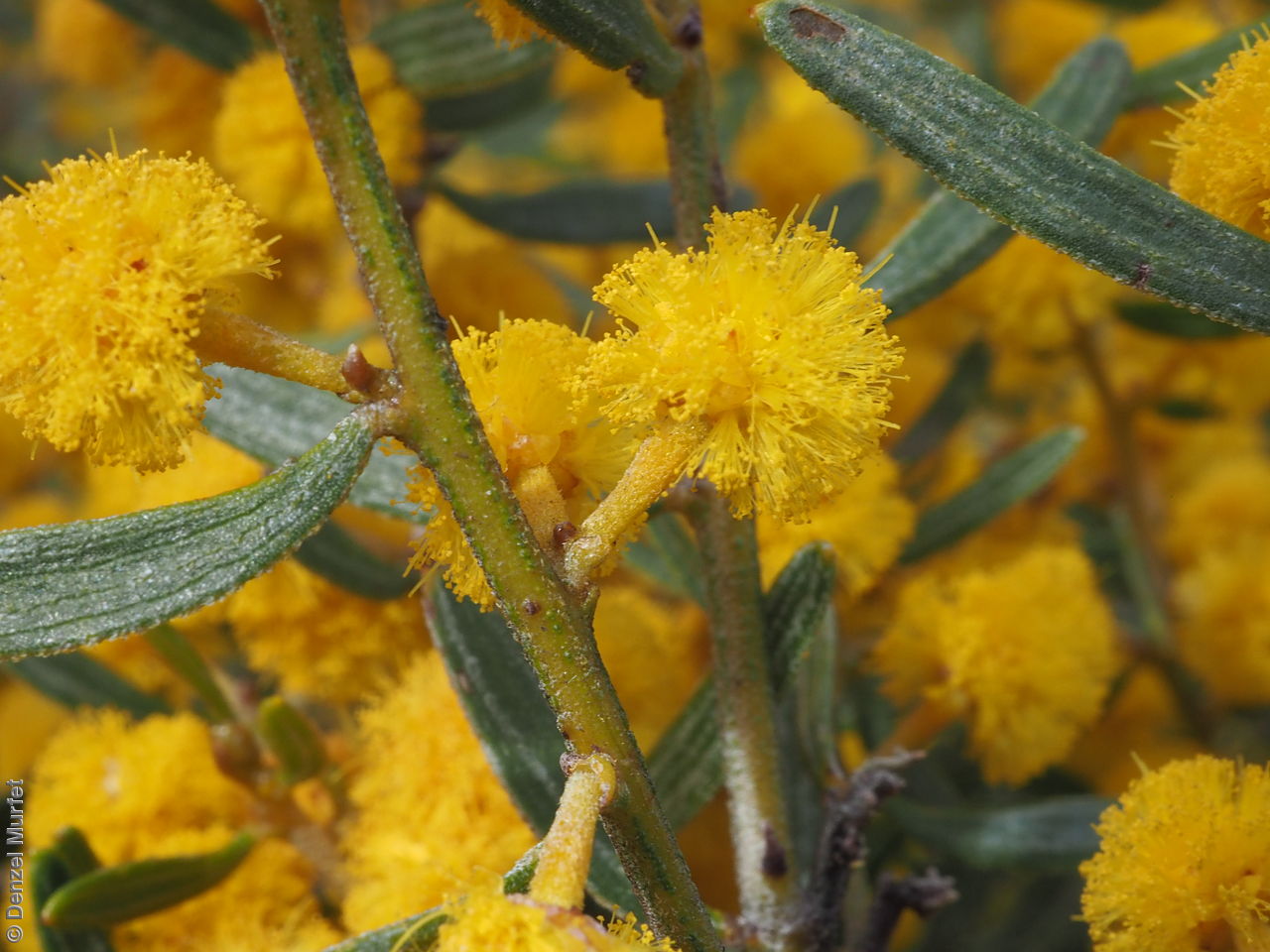
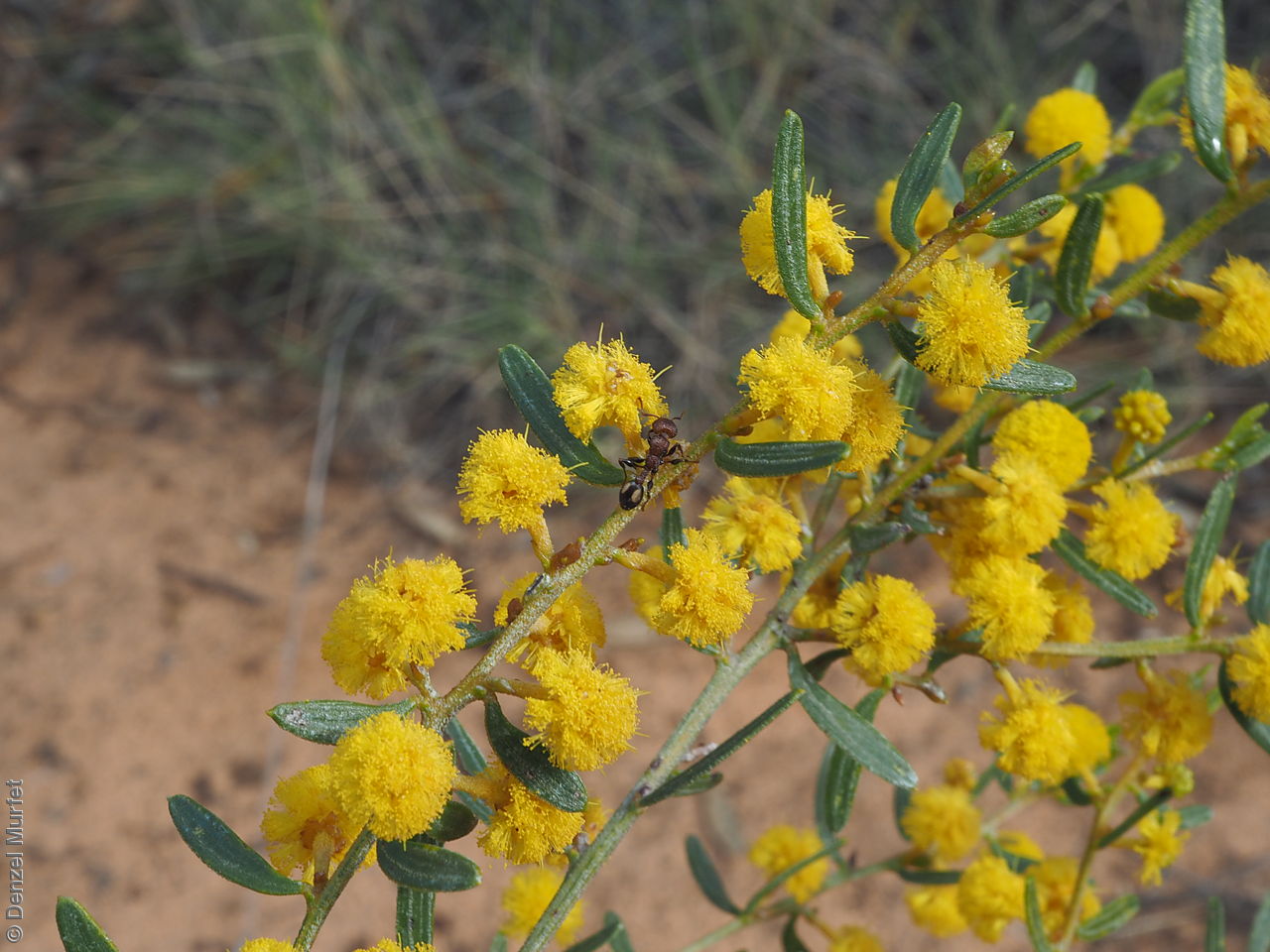
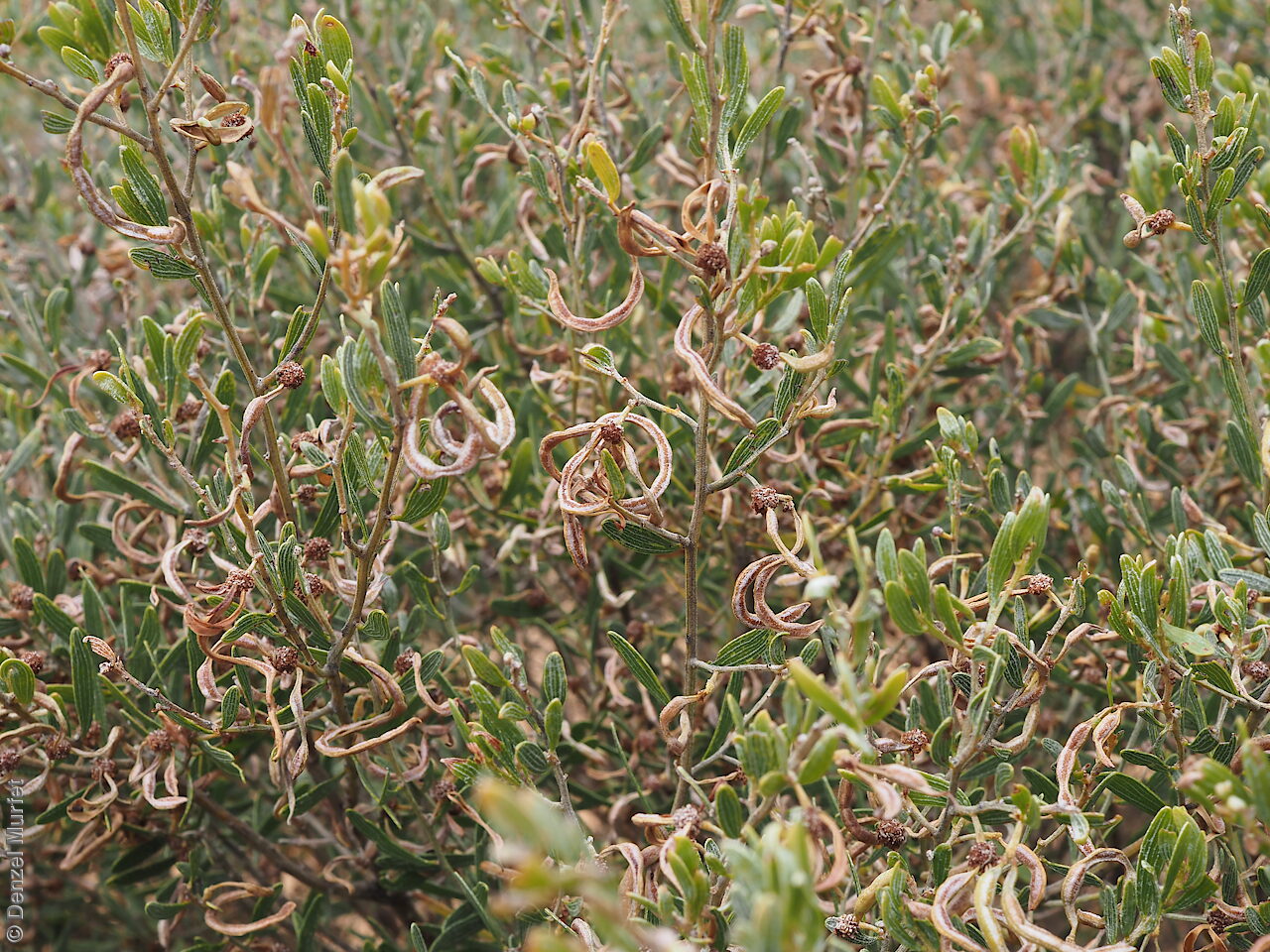

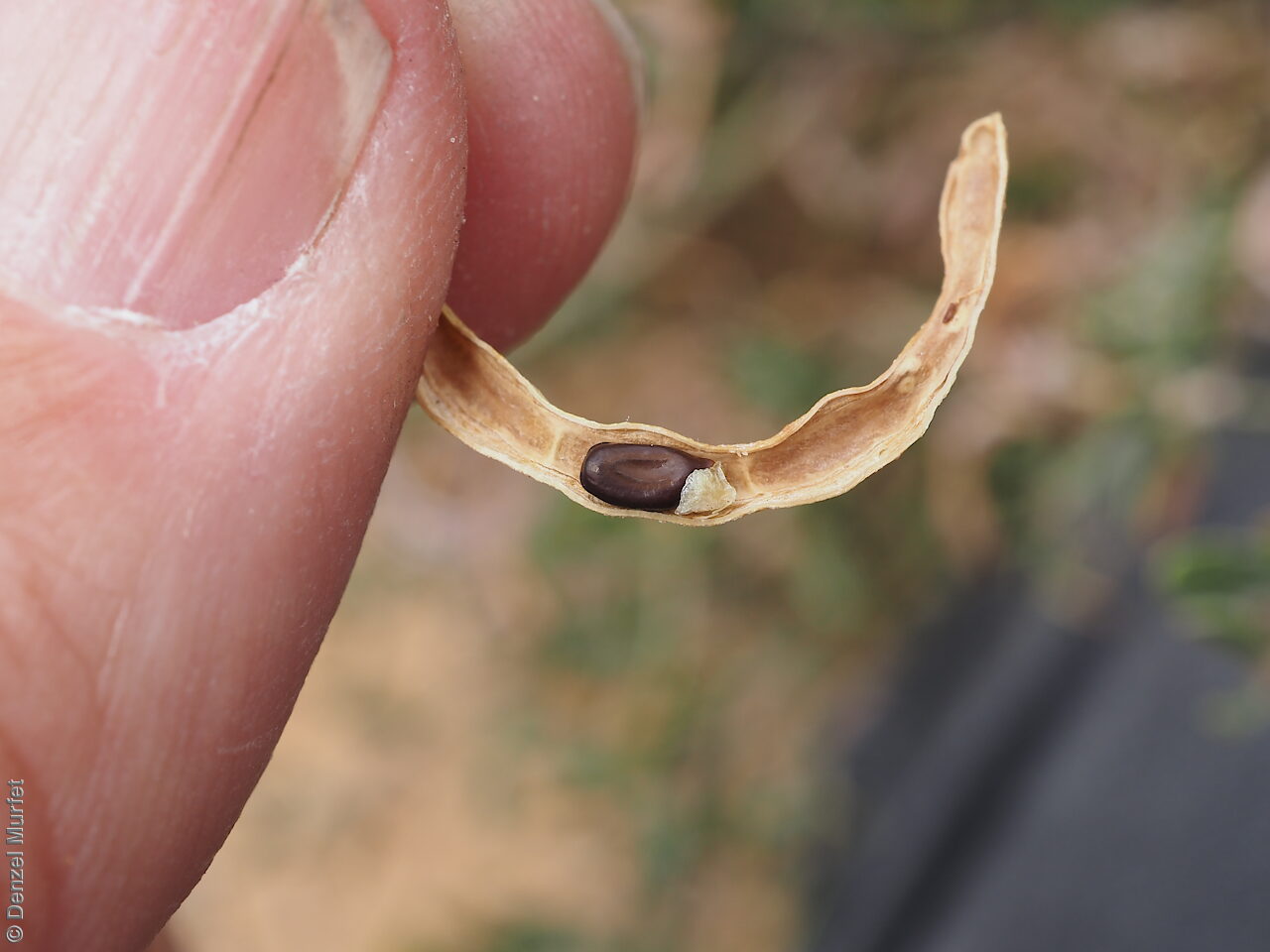
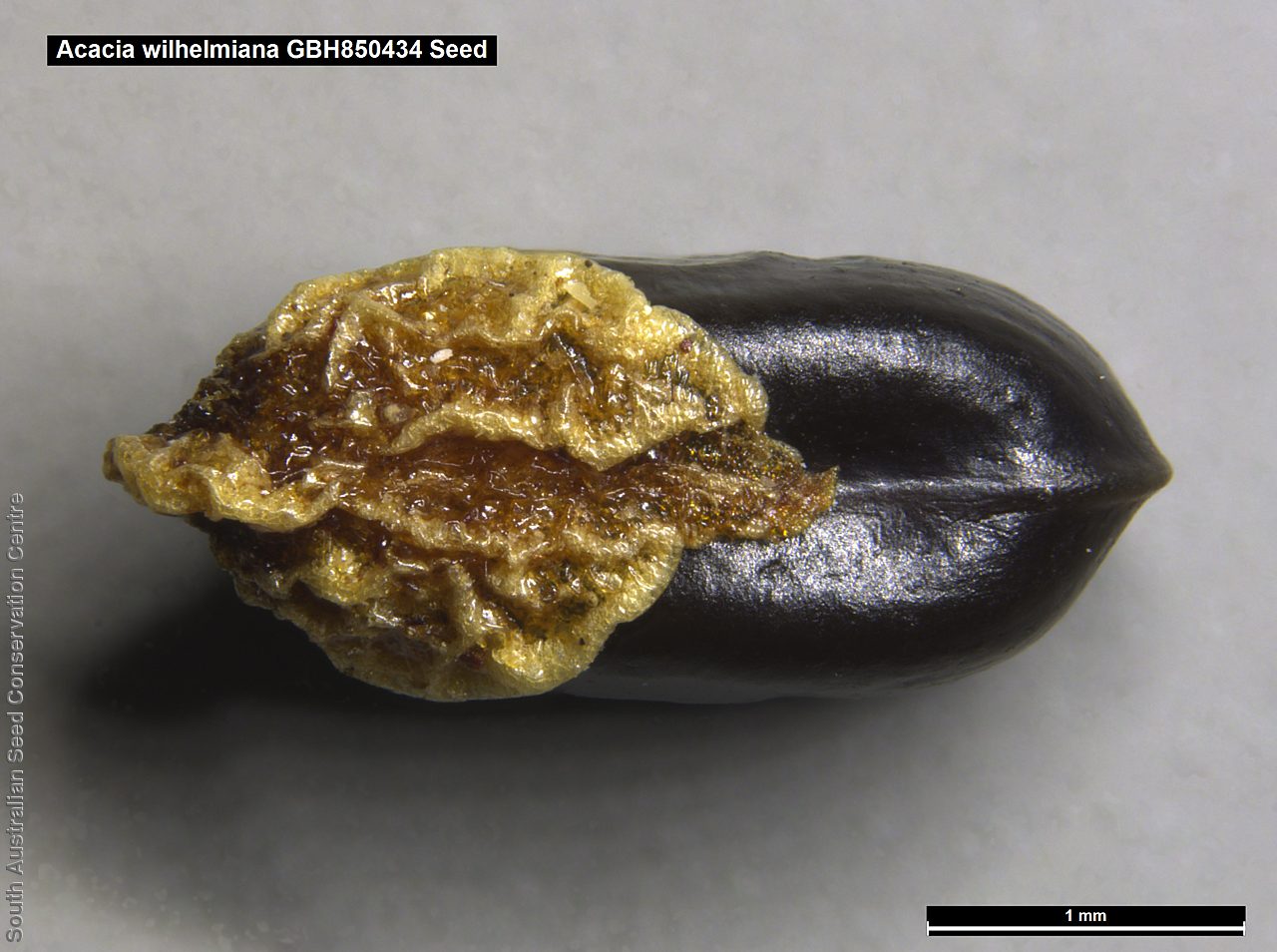
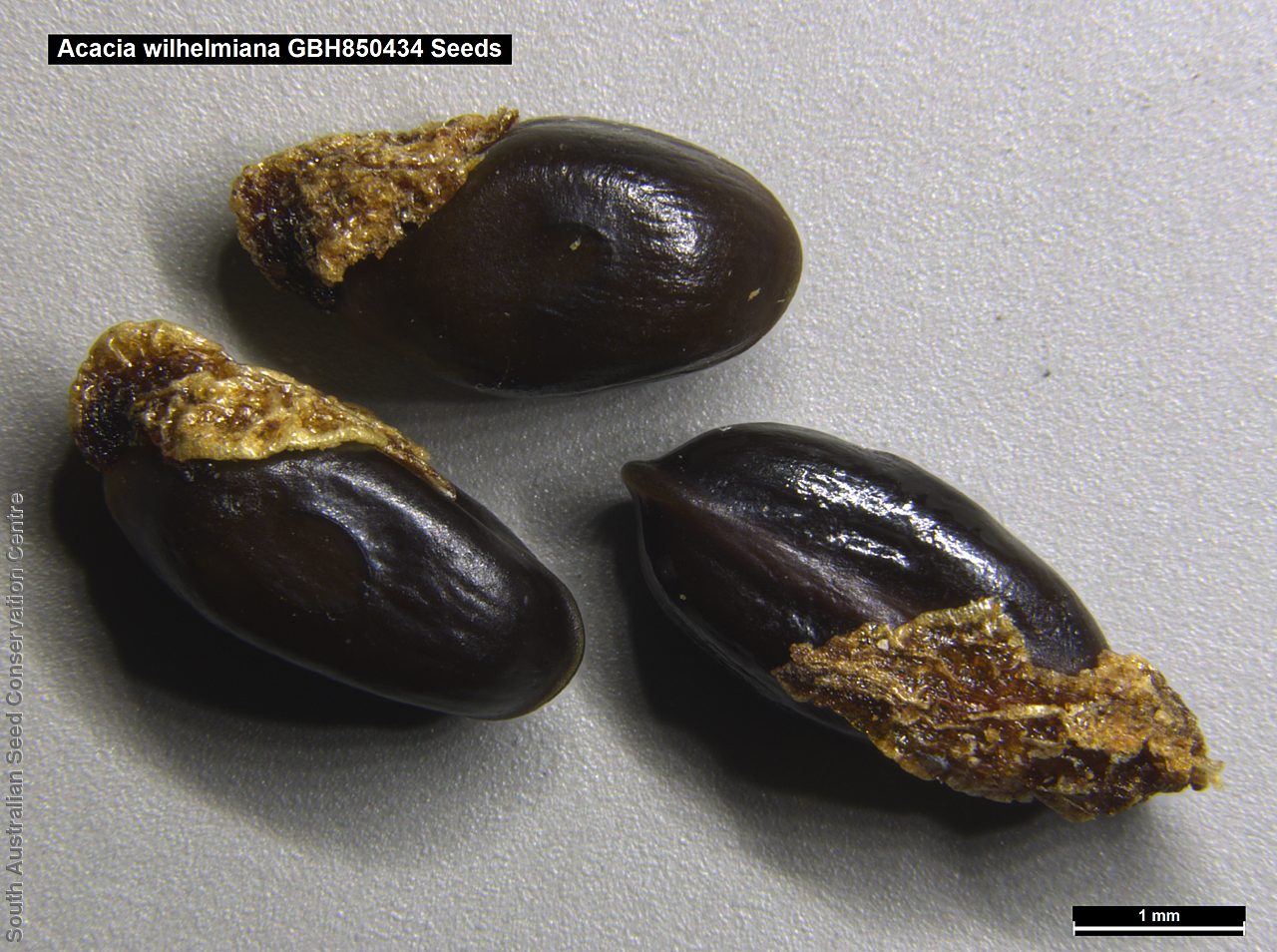
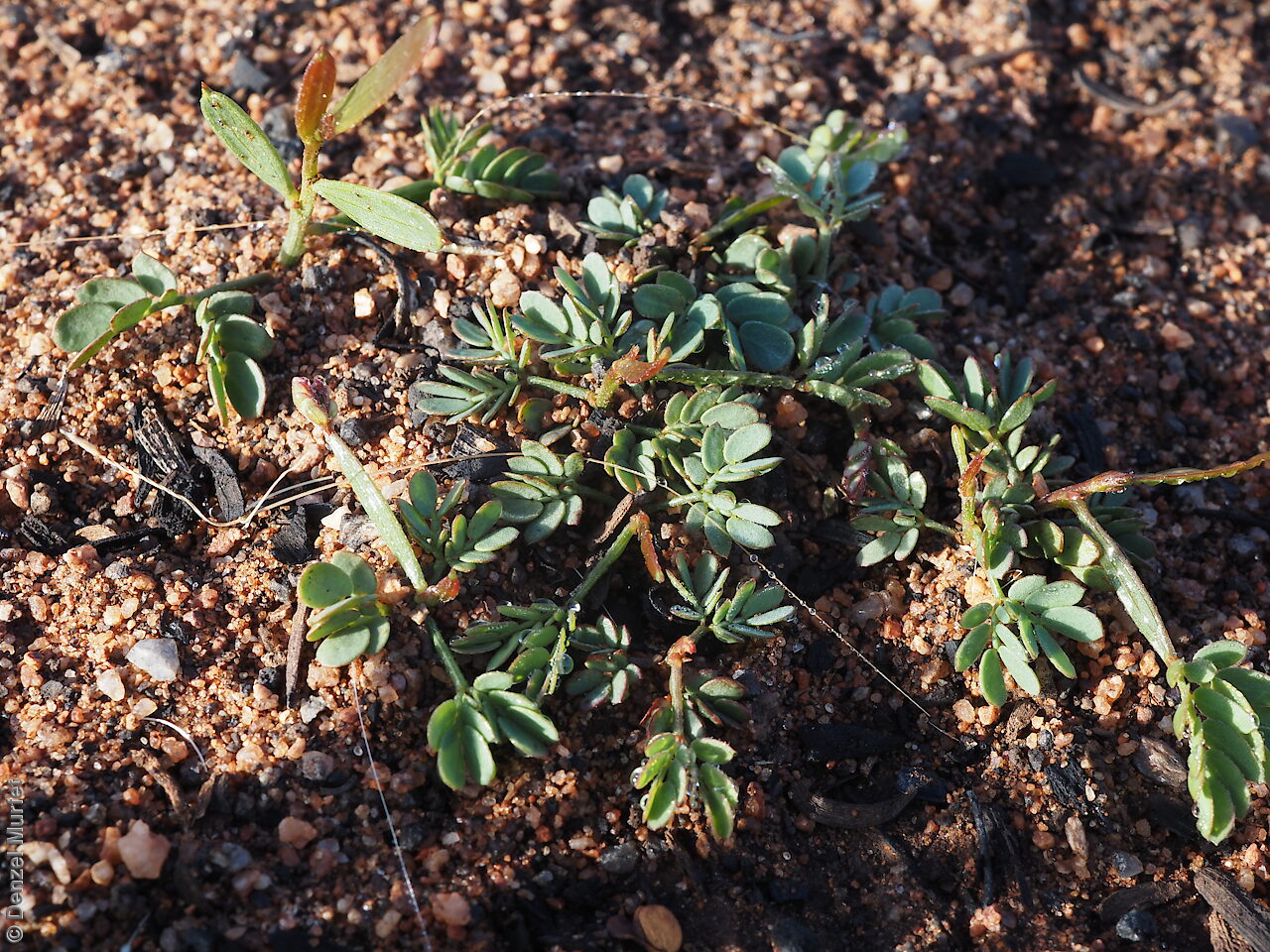
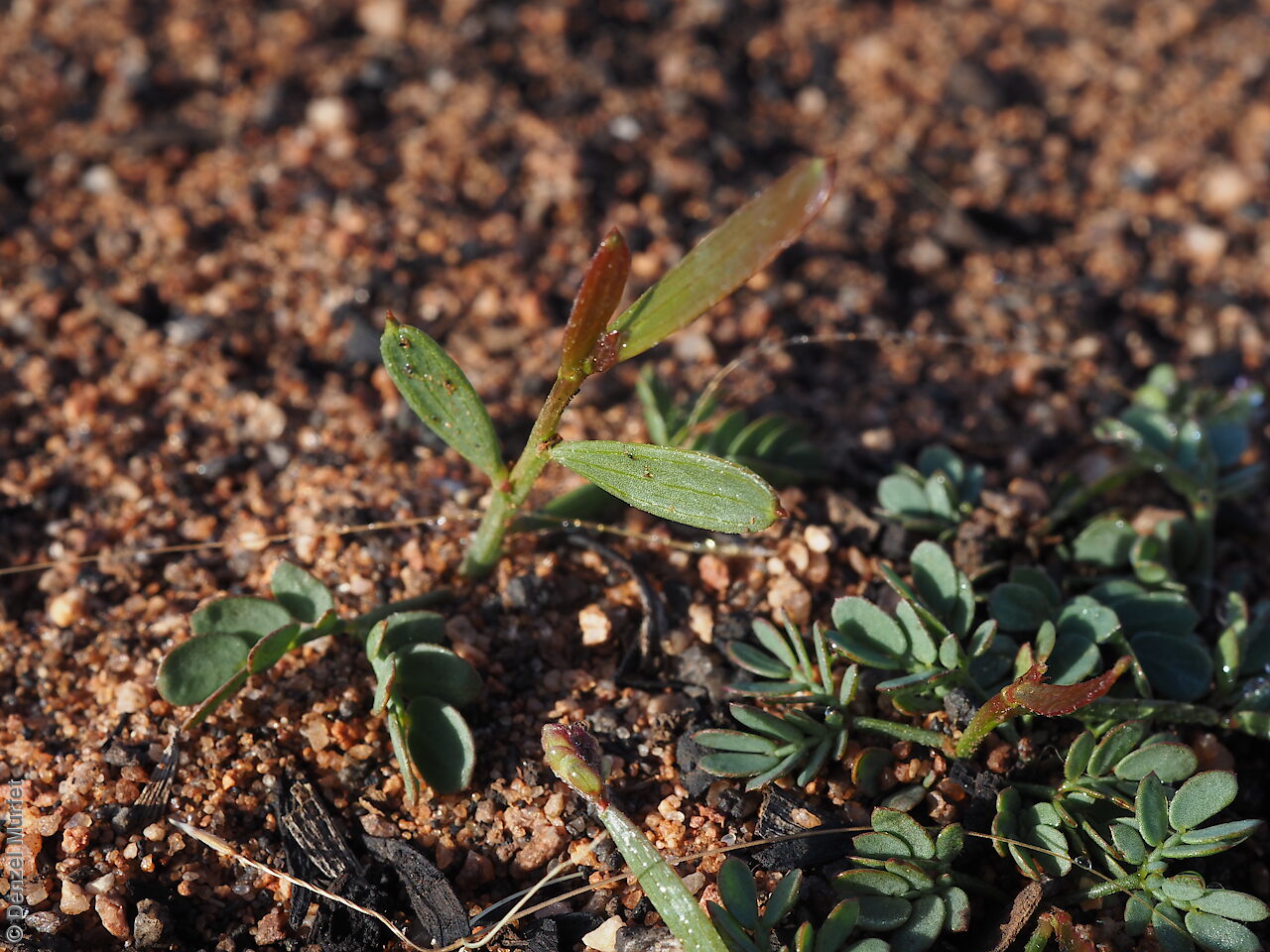

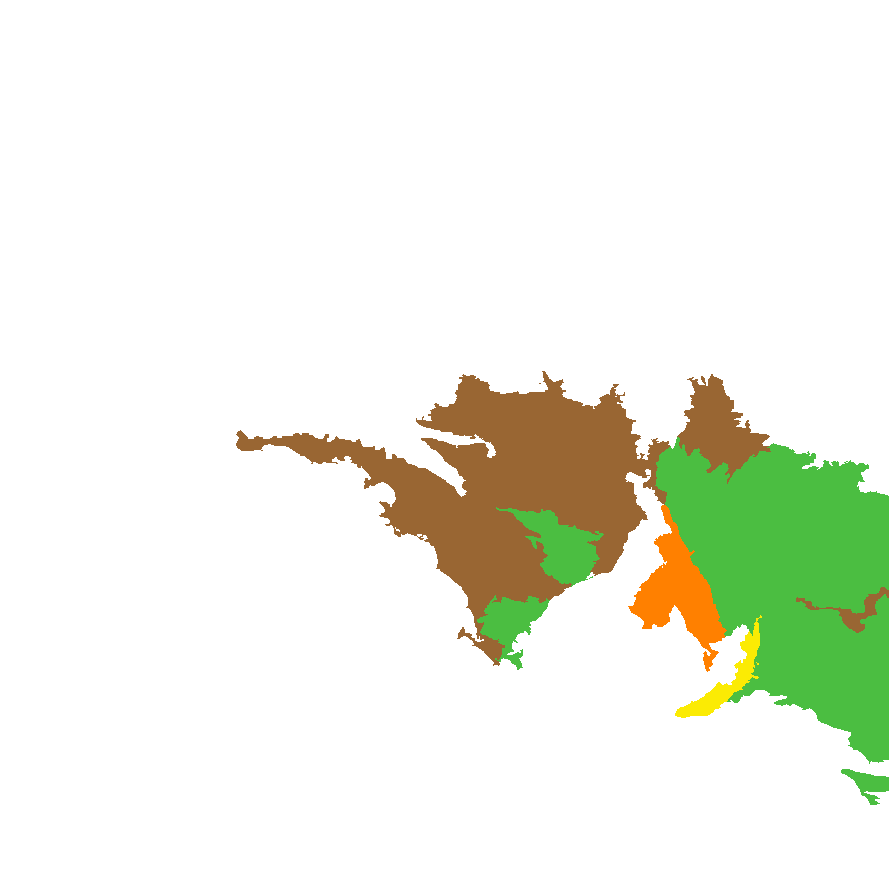
Botanical art
Prior names
Acacia calamifolia var. wilhelmiana (as wilhelmsiana)
Acacia leptophylla
Acacia bynoeana
Acacia bynoeana var. latifolia, nom.inval.
Common names
Wilhelm's Wattle
Dwarf Nealie
Etymology
Acacia from the Greek 'akakia' and derived from 'ake' or 'akis' meaning a sharp point or thorn and 'akazo' meaning to sharpen. Dioscorides, the Greek physician and botanist used the word in the 1st century AD for the Egyptian thorn tree, Acacia arabica. Wilhelmiana named in honour of Carl Wilhelmi who was the acting Director of the Royal Botanic Gardens in Melbourne.
Distribution and status
Occurs in open-scrub mallee vegetation from Eyre Peninsula eastwards to the Flinders Ranges, northern Mount Lofty Ranges and Murray region, . Also found in New South Wales and Victoria. Native. Common in South Australia. Common in the other States.
Herbarium regions: Gairdner-Torrens, Flinders Ranges, Eastern, Eyre Peninsula, Murray
NRM regions: Eyre Peninsula, Northern and Yorke, South Australian Arid Lands, South Australian Murray-Darling Basin
AVH map: SA distribution map (external link)
Plant description
Dense compact rounded, spreading, viscid shrubs to 3 m high. Leaves linear, flat or sub-terete, oblong-cuneate to 3 cm long and 4 mm wide. Inflorescences axillary and solitary or twin, sometimes on a very short common peduncle with globular, yellow flower-heads. Flowering between August and October. Fruits are long, curved, brown pod to 6 cm long. Seeds are dark brown, oblong to elliptic seeds to 4 mm long and 2 mm wide. Seed embryo type is investing.
Seed collection and propagation
Collect seeds between November and December. Collect mature pods that are turning brown, with hard, dark seeds inside. Place the pods in a tray and leave to dry fro 1-2 weeks or until the pods begin to split. Then rub the dried pods to dislodge the seeds. Use a sieve to separate any unwanted material. Store the seeds with a desicant such as dried silica beads or dry rice, in an air tight container in a cool and dry place. This species has physical dormancy that needs to be overcome for the seed to germinate (e.g. nicking or softening the seed coat).
| Location | No. of seeds (weight grams) | Number of plants | Date collected | Collection number Collection location | Date stored | % Viability | Storage temperature |
|---|---|---|---|---|---|---|---|
| MSB | 3,000 (17.88 g) | 40-50 | 20-Dec-2006 | DJD737 Murray |
Number of plants: This is the number of plants from which the seeds were collected.
Collection location: The Herbarium of South Australia's region name.
% Viability: Percentage of filled healthy seeds determined by a cut test or x-ray.